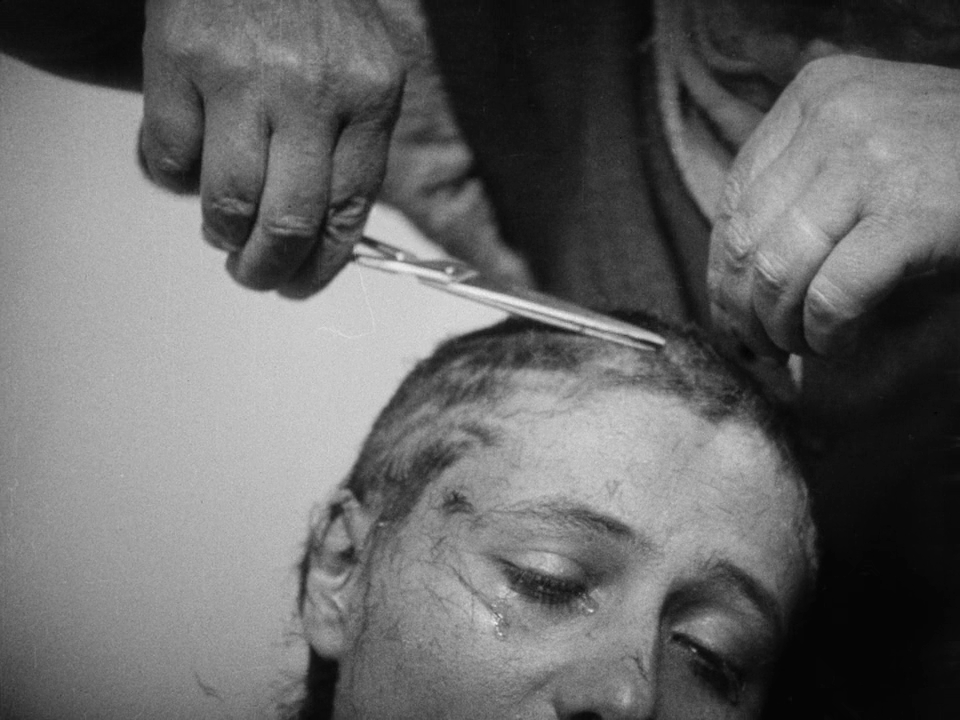
“The reality of The Passion of Joan of Arc was so palpable that in 1929, five hundred years after the actual event, when this amazing cinematic attempt to probe into layers of the past – stripping a historic occurrence bare – was shown in New York City, two spectators died in their seats from shock during the first week. Showings were canceled. The Catholic Church demanded whole scenes be excised from the film, although Dreyer had followed faithfully the transcripts of the original trial.”
Jan Wahl1
“And with one exception all of Dreyer's subsequent films were based on either novels or plays. The one exception, if it can be so called, is La Passion de Jeanne d'Arc, which was based on the official transcripts of the proceedings of Joan of Arc's trials, even then with some remote reference to a novel. Dreyer himself remained untroubled by this reliance on second hand material: ‘I know that I am not a poet. I know that I am not a great playwright. That is why I prefer to collaborate with a true poet and with a true playwright.’”
Tom Milne2
“Si Dreyer est l’égal des plus grands par le langage, il est supérieur aux plus grands par son propos. Et s’il est vain et probablement impossible de choisir le second chef-d’œuvre du cinéma, il est aussi impossible d’hésiter en ce qui concerne le premier. La Passion de Jeanne d’Arc est le plus beau film du monde.”
Chris Marker3
“‘So many people have thought,’ Dreyer explained, ‘that Falconetti was ‘unknown’ when I used her in Jeanne d’Arc. She was not; she was famous and well esteemed. She had a luxurious apartment on the Champs Elysées. ‘But I talked to her, and she had faith in our project. She exercised a prima donna’s temper just a few times – or [and his eyes twinkled] you might call it woman’s vanity. It was in her contract that she agreed to have her hair clipped off in one of the scenes. But when the day arrived, the camera ready, she protested. She said, ‘I will not do it.’ She wept. I pleaded with her; I told her we had to have the real thing, that she must suffer it. After all, Jeanne did. That calmed her a bit, and we started the scene.’ Dreyer paused, then continued. ‘The man came up to her with the shears. She became hysterical, but I insisted and finally she gave way. ‘All right,’ she said. And we shot the scene.’”
Jan Wahl4
“There is not one single establishing shot in all of The Passion of Joan of Arc, which is filmed entirely in closeups and medium shots, creating fearful intimacy between Joan and her tormentors. Nor are there easily read visual links between shots. In his brilliant shot-by-shot analysis of the film, David Bordwell of the University of Wisconsin concludes: ‘Of the film’s over 1,500 cuts, fewer than 30 carry a figure or object over from one shot to another; and fewer than 15 constitute genuine matches on action.’”
Roger Ebert5
“The need for criticism to recognize disunity and contradiction is nowhere more pressing than in the analysis of La Passion de Jean d’Arc. The polite respect accorded a classic must not obscure the plain fact of the film’s strangeness. It is one of the most bizarre, perpetually difficult films ever made, no less disruptive and challenging than the early films of Eisenstein or Ozu. Moreover, Jeanne d’Arc plays upon representational systems - especially images and language - in disturbing ways. Since many critics (including myself in a monograph on the film) have argued that it possesses a splendid unity, it is time to defamiliarize this classic and to notice its gaps and dislocations, its estranging features. With respect to the style of Dreyer’s previous films and the norms of the classical cinema, Jeanne d’Arc powerfully rejects dominant relationships between narrative logic and cinematic space.”
David Bordwell6
“When Godard’s Nana at the cinema in Vivre sa vie weeps at the brief extract of Joan’s torment from La Passion de Jeanne d’Arc, Dreyer’s film is suddenly rescued from the clammy aura of film society memories. It is no longer a classic to be revered, but a piece of living film to be experienced. Viewed as a whole, Dreyer’s work affords a startling illustration of the fact, which Godard perhaps more than any other director has realised and demonstrated, that there is no essential hiatus between silent past and sound present, no tension between outdated techniques and new discoveries, but simply the gradual accumulation of a vocabulary available for anybody who knows how to use it. Truffaut using Griffith techniques (Tirez sur le pianiste) looks new wave; British and Hollywood directors copying new wave tricks look positively medieval; and Dreyer’s films look neither old nor new. They simply exist, having as much to do with the present of the cinema as its past or its future.”
Tom Milne7
- 1Jan Wahl, Carl Theodor Dreyer and Ordet: My Summer with the Danish Filmmaker (Kentucky, University Press of Kentucky, 2012), 2.
- 2Tom Milne, The Cinema of Carl Dreyer (New York, A. S. Barnes, 1971), 22.
- 3Chris Marker, “La Passion de Jeanne d’Arc,” Esprit, 20ème année, n°5, mai 1952.
- 4Jan Wahl, Carl Theodor Dreyer and Ordet: My Summer with the Danish Filmmaker (Kentucky, University Press of Kentucky, 2012), 11.
- 5Roger Ebert, “The Passion of Joan of Arc,” Rogerebert.com, 16 February 1997.
- 6David Bordwell, The Films of Carl Theodor Dreyer (University Presses of California, Columbia and Princeton, 1981), 66.
- 7 Tom Milne, The Cinema of Carl Dreyer (New York, A. S. Barnes, , 1971), 10.

